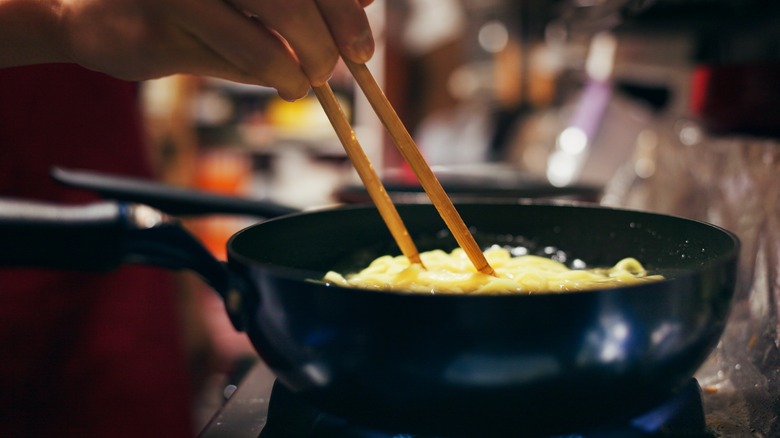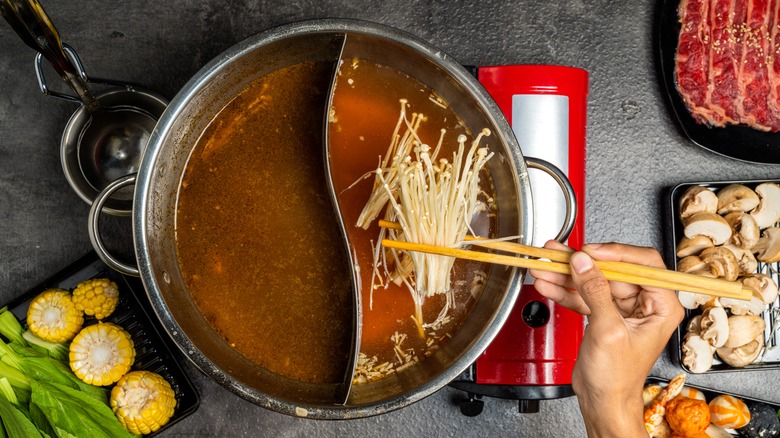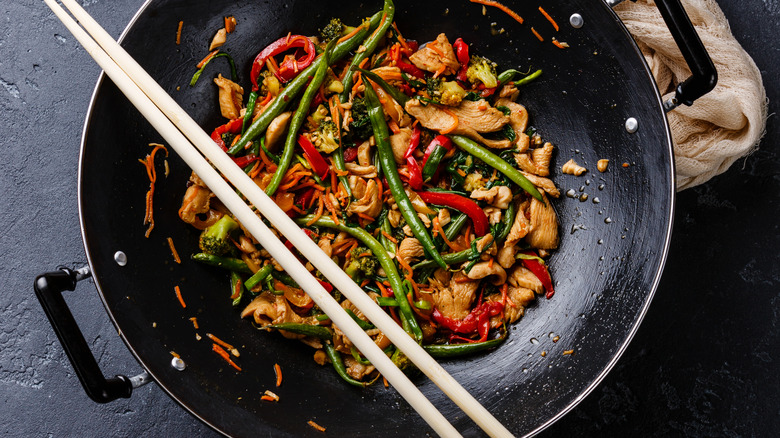Cooking Methods You Should Try With Chopsticks (And Which To Avoid)
For some diners, mastering the use of chopsticks to snag a piece of sushi or make their way through a bowl of noodles or fried rice is an accomplishment worth celebrating. You may have even found them to be an unexpected way to ease your salad experience. But the utility of these ingenious utensils isn't limited to the dining table — they're super handy when it comes to cooking, too.
To help explain chopsticks' functionality in the kitchen, Daily Meal turned to an expert, Ji Hye Kim, chef and owner of Miss Kim in Ann Arbor, Michigan, a Food & Wine Best New Chef in 2021, and a James Beard Award Foundation Semifinalist multiple years running.
Kim will be participating in the Seoul Salon for one weekend only, August 17–18, 2024 in New York City (you can snag your reservations for her highly anticipated Bunsik Brunch Pop-up, featuring dishes like shakshouka tteokbokki to aged kimchi & tuna kimbap on Resy now), but she took a few minutes from preparations to share her invaluable advice on when, where, and how to wield your chopsticks when you're whipping up a meal — as well as when to keep them in the drawer.
Why and how chopsticks making perfect cooking tools
When it comes to cooking, Ji Hye Kim values the versatility of using chopsticks as a multi-functional tool. She suggests grabbing your chopsticks for jobs like sautéing, scrambling, and stirring. Kim explains that they're also super useful for dishes that require a delicate touch, like certain egg classics. "I often use them to fold omelettes or gyeran mari by gently using the chopsticks to hold an edge of the food and flip it," she says.
While Kim believes this method allows for a more gentle approach to stirring and sautéing, chopstick cooking does have some limitations. "Chopsticks won't be a good replacement for a rubber spatula for scraping the side of pans or containers," Kim says. She also adds that when it comes to stirring, they're a less effective tool for liquids (think stocks and sauces). That said, if you can get a hang of handling chopsticks as a cooking utensil, they can take the place of some other kitchen standbys like tongs or tweezers — and even a whisk.
Getting started with chopstick cooking
If you're intimidated by the idea of cooking with chopsticks, Ji Hye Kim suggests taking this technique for a spin with something simple and familiar. "Try using a pair of chopsticks you already have for eating to whisk eggs for omelets," she says (perhaps providing you with an essential new tip for ensuring the perfect omelet every time). From there, you can gauge your comfort level and determine if you're ready to make the leap to a dish like a Korean-style beef stir fry recipe, or even deep frying. At that point, you may want to consider longer chopsticks, which will put a safer distance between yourself and the heat.
Chopsticks aren't just useful for cooking, but you can reach for them when you're plating, too. "I sometimes joke that tweezers are for folks who cannot use chopsticks well," Kim said. In this case, you'll want chopsticks that are more tapered at the tip, which will allow for a bit more precision. Given the many ways chopsticks can go to work for you behind the scenes or at the table, it's clear that they have a go-to place, for experts and home cooks alike.


